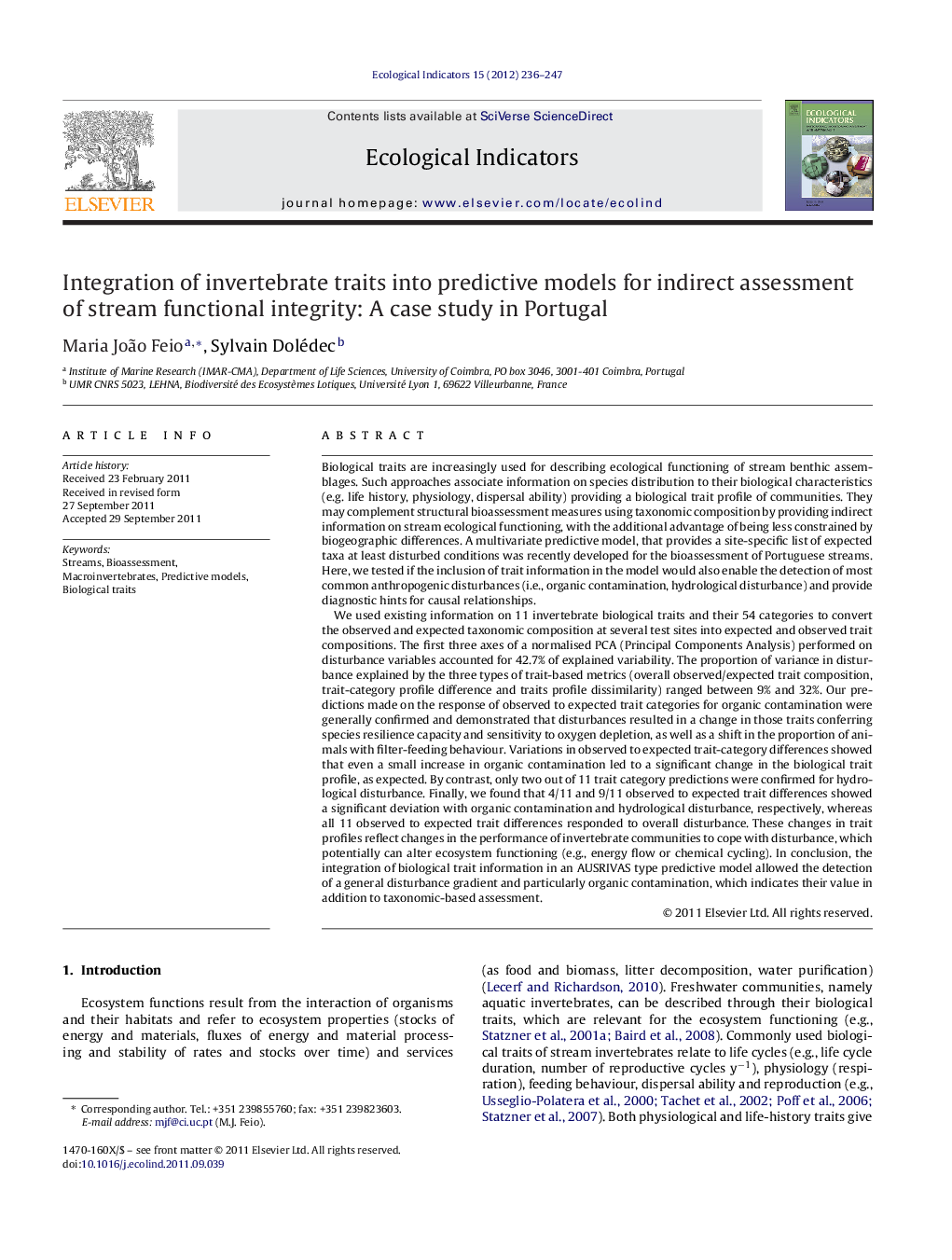| کد مقاله | کد نشریه | سال انتشار | مقاله انگلیسی | نسخه تمام متن |
|---|---|---|---|---|
| 4373934 | 1303156 | 2012 | 12 صفحه PDF | دانلود رایگان |
عنوان انگلیسی مقاله ISI
Integration of invertebrate traits into predictive models for indirect assessment of stream functional integrity: A case study in Portugal
دانلود مقاله + سفارش ترجمه
دانلود مقاله ISI انگلیسی
رایگان برای ایرانیان
موضوعات مرتبط
علوم زیستی و بیوفناوری
علوم کشاورزی و بیولوژیک
بوم شناسی، تکامل، رفتار و سامانه شناسی
پیش نمایش صفحه اول مقاله

چکیده انگلیسی
We used existing information on 11 invertebrate biological traits and their 54 categories to convert the observed and expected taxonomic composition at several test sites into expected and observed trait compositions. The first three axes of a normalised PCA (Principal Components Analysis) performed on disturbance variables accounted for 42.7% of explained variability. The proportion of variance in disturbance explained by the three types of trait-based metrics (overall observed/expected trait composition, trait-category profile difference and traits profile dissimilarity) ranged between 9% and 32%. Our predictions made on the response of observed to expected trait categories for organic contamination were generally confirmed and demonstrated that disturbances resulted in a change in those traits conferring species resilience capacity and sensitivity to oxygen depletion, as well as a shift in the proportion of animals with filter-feeding behaviour. Variations in observed to expected trait-category differences showed that even a small increase in organic contamination led to a significant change in the biological trait profile, as expected. By contrast, only two out of 11 trait category predictions were confirmed for hydrological disturbance. Finally, we found that 4/11 and 9/11 observed to expected trait differences showed a significant deviation with organic contamination and hydrological disturbance, respectively, whereas all 11 observed to expected trait differences responded to overall disturbance. These changes in trait profiles reflect changes in the performance of invertebrate communities to cope with disturbance, which potentially can alter ecosystem functioning (e.g., energy flow or chemical cycling). In conclusion, the integration of biological trait information in an AUSRIVAS type predictive model allowed the detection of a general disturbance gradient and particularly organic contamination, which indicates their value in addition to taxonomic-based assessment.
ناشر
Database: Elsevier - ScienceDirect (ساینس دایرکت)
Journal: Ecological Indicators - Volume 15, Issue 1, April 2012, Pages 236-247
Journal: Ecological Indicators - Volume 15, Issue 1, April 2012, Pages 236-247
نویسندگان
Maria João Feio, Sylvain Dolédec,